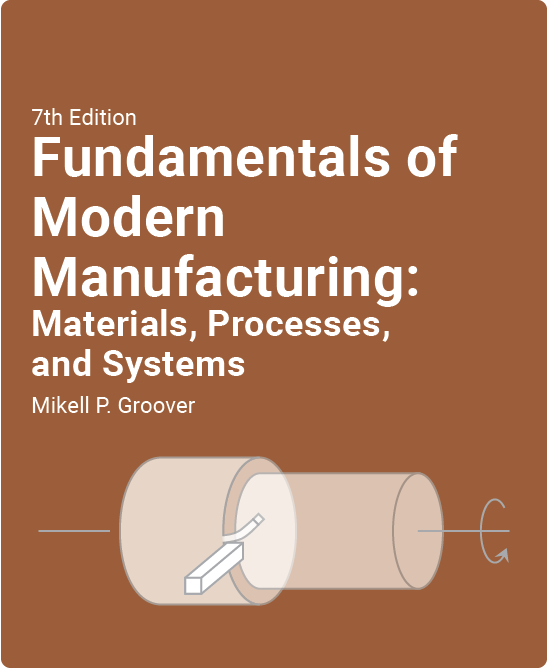From Equations to Intuition: Teaching Manufacturing Processes That Stick – zyBooks Guide
By Dr. Ryan Barlow and Dr. Greg Mason
Introduction
You’ve seen it countless times: students solve manufacturing calculations flawlessly on exams, then design parts that are impossible to produce. They determine the correct extrusion pressure but can’t explain why material flows the way it does. They ace tolerance problems but specify features that would triple production costs.
The disconnect is fundamental. Students master the equations without understanding the processes those equations describe.
In our October 2025 workshop with manufacturing instructors nationwide, we tackled this challenge head-on. Between us, we’ve spent over 30 years teaching manufacturing processes—from leading facility tours at Seattle-area manufacturers to developing hands-on machine shop experiences to creating interactive digital content. This article shares strategies that work across different institutions, resources, and teaching styles.
Why Manufacturing Processes Are Uniquely Challenging to Teach
Manufacturing processes present a visualization problem other engineering disciplines don’t face to the same degree. Consider shell molding: students need to understand how the pattern heats the sand, how the resin binder cures, how the shell forms layer by layer, and how it separates from the pattern. Static textbook figures show maybe three snapshots of this continuous process.
Static images force students to fill in the blanks. They usually fill them in wrong.
Even facility tours have limitations. At Seattle University, we arranged weekly tours of local manufacturers—Fluke, Foss Maritime, Kenworth, and job shops. Students saw the scale of real manufacturing and appreciated the complexity. But even standing on the factory floor, they couldn’t see the internal mechanisms and processes – where the actual transformations occur.
The consequence: students resort to memorizing sequences of equations and calculations rather than understanding how the process works. Without that deeper understanding, students struggle to visualize any scenario that differs significantly from what they have seen and predict what happens if parameters change.
Solving the Visualization Challenge
The manufacturing education community has developed multiple approaches to address visualization challenges:
Hands-on fabrication labs provide direct experience with processes like turning, milling, CNC, sheet metal work, and welding. Students learn firsthand how tolerance, surface finish, and feature geometry affect cost and manufacturability. The limitation: significant capital investment. Even assuming the highest levels of investment, it’s not practical to show some processes.
Video resources from organizations like the Society of Manufacturing Engineers (SME) offer hundreds of process demonstrations. These videos work with any curriculum and course materials, showing real manufacturing in action. The limitation: many videos are cluttered by the physical setting, and don’t reveal what’s happening inside the machines.
Interactive animations—such as in zyBooks—represent a new approach. These break processes into discrete steps with student-controlled pacing, show internal mechanisms impossible to capture otherwise, and connect calculations directly to visual processes.
Why Step-by-Step Visualization Works
When teaching extrusion, effective visualization shows material feeding, then pressure building, then flow through the die, then cooling, and how die design affects the process. Each stage is isolated so that students understand how one enables the next. Students control the pace, reviewing complex sections as needed.
The pedagogical advantage comes from this segmentation. Rather than watching a 30-second video that shows the entire process at once, students can focus on understanding each transformation before moving forward.
When students can pause, study, and replay specific stages, they build accurate mental models instead of guessing at what they can’t see.
Connecting Visuals to Calculations
Even more powerful is connecting visual content directly to equations and the problem-solving process. Students watch plastic flow through an extruder barrel while seeing the viscosity equation and pressure calculations alongside the visual. They understand where the numbers come from in the physical process, not as abstract formulas.
This connection works whether you’re using digital animations like in zyBooks that integrate Groover’s calculations with process visuals, carefully sequenced videos with your own narration, or even well-designed demonstrations in a machine shop. The principle remains: show students the physical process, then connect it explicitly to the mathematical models and the equations needed to solve the problem.
Addressing Persistent Misconceptions
Certain misconceptions appear semester after semester, regardless of institution or course materials. In casting, students believe only solid shapes are possible, missing that cores enable internal geometries. They assume expensive alloys can’t be cast or that all cast parts have poor surface finish. In machining, students misjudge what tolerances different processes can achieve and don’t understand how process selection affects surface finish.
Targeting Misconceptions with Intentional Questions
Well-designed assessment questions can target specific misconceptions. Rather than generic wrong answers, each choice addresses a particular flawed mental model. For example, the following question targets misconceptions about casting:
In shell molding, why does the pattern need to be heated?
A) To melt the metal (targets confusion between pattern and actual casting)
B) To activate the resin binder in the sand (correct)
C) To expand the pattern for easier removal (targets misunderstanding of thermal effects)
Provide feedback for each choice—not just “correct” or “incorrect.” Include an explanation of why the reasoning fails or why an answer is accurate.
This approach works in any setting: online quizzes, in-class clickers, written exams, etc. Participation Activities in zyBooks take this approach. The key is identifying common misconceptions from students’ past performance and designing questions that force them to confront those specific misunderstandings.
Beyond Process Mechanics: From “How” to “Why”
Because there are so many topics to cover, manufacturing courses often focus almost entirely on process mechanics —students become comfortable with force equations, cutting speed calculations, and material property lookups. But they don’t develop the critical thinking needed for process selection decisions.
The recommended shift: Maintain strong process foundation while adding meaningful emphasis on design considerations and economic analysis.
Integrating Economics and Design
When teaching extrusion, don’t stop at calculating die pressure. Discuss the economic decision-making:
- For small production runs, can we justify $15,000 in custom die tooling?
- At what volume does extrusion become more cost-effective than machining individual parts?
- How do material costs for extrusion-grade polymers compare to alternatives?
- What’s the break-even point when factoring in per-unit costs versus tooling investment?
Present economic analysis alongside process mechanics. For example, “At 10,000 units, extrusion costs $2.50/part versus $8.75/part for machining. But initial tooling is $15,000 versus $500. When does extrusion make sense?”
A part might be geometrically correct and structurally sound but impossible to produce economically.
Integrating coverage of design can also be an effective way of promoting critical thinking within a manufacturing course. It’s also possible to create assignments related to design, such as:
- Provide a scenario where the student must choose which process to use to create a specific part.
- With specifications, ask students to choose which material would be ideal.
- Share an example of a complex part and ask them to modify the design in order to make it easier to produce.
- Semester-long projects to design a hypothetical product.
Students need both process understanding and business judgment to make good design decisions.
Implementation approaches:
- Add economic analysis components to existing problems.
- Assign projects where students must justify process selection with cost analysis.
- Use case studies from real manufacturers showing how process choices affected profitability.
- Invite industry guests to discuss how their companies make manufacturing decisions.
- Use online resources on design.
- Create short or long-term design project(s) for students.
zyBooks Peer-to-Peer Workshop, October 2025
Strategic Teaching Approach
Create space to integrate Economics and/or Design topics into a manufacturing course requires restructuring how you utilize class time.
Before Class: Preparation That Actually Happens
Assign students activities that engage with process explanations and visual content before lecture—whether through reading course materials, curated videos, or interactive content like zyBooks.
Research across engineering disciplines shows that allocating even 5-10% of course grades to pre-class preparation drives 80%+ completion. The goal isn’t perfection but engagement. Students who wrestle with concepts before class arrive ready for deeper discussions.
During Class: Focus on Analysis, Not Explanation
An instructor could easily spend 30 minutes at the whiteboard sketching extrusion die cross-sections while students copy diagrams. If students watch visualizations (video or animations) before class, lecture time can shift.
When students arrive having seen the process, class discussion can shift from “how does this work?” to include “why would we choose this?”
Instead of just covering “here’s how shell molding works,” you could also discuss “why would we choose shell molding over investment casting for this application?” Focus shifts to design decisions, cost implications, and process selection criteria—the kind of critical thinking that is required of professional engineers.
Group work strategies: Assign process selection problems where groups must evaluate multiple manufacturing methods for a given part. Different groups can tackle different materials, production volumes, or tolerance requirements. This approach generates rich discussion about tradeoffs without requiring specialized software or equipment.
After Class: Practice With Feedback
Students need opportunities to apply their understanding with immediate feedback. This works through various methods:
- Auto-graded homework with randomized values, through your Learning Management System or in zyBooks, help students understand the problem solving process.
- Peer review of process selection decisions where students critique each other’s manufacturing choices.
- Progressive problem sets that build from basic calculations to complex design scenarios.
The goal is to focus on design projects and complex assessments that actually help students develop engineering judgment.
What the Research Shows
Engineering education research presented at the 2025 ASEE conference related to our interactive zyBooks content showed a statistically significant improvement in grade outcomes when zyBook activities were assigned as part of the homework grade. Key results included:
- A/B/C grades increased by 27% (from 45% to 57%).
- D/F grades were reduced by 22% (from 55% to 43%).
- Five-fold increase in student engagement time.
- Statistically significant improvement in final exam performance.
A 2024 peer-review ASEE study showed statistically significant increases in student self-efficacy with Engineering zyBooks, including increased confidence in solving engineering problems and understanding the course material.
Key finding: Implementation matters more than just access. Instructors who strategically assign activities (even for small grade percentages) see better results than those who simply make resources available. Consistent, low-stakes engagement produces stronger outcomes than occasional high-stakes exams alone.
Conclusion
Manufacturing education requires students to build mental models of dynamic, three-dimensional processes. Static images and verbal descriptions require students to imagine processes they’ve never seen.
The teaching strategies that work—whether using videos, animations, or hands-on labs—share common principles. They assign students related activities before class. They use class time to engage students in problem-solving. And they provide consistent feedback that addresses misconceptions.
These approaches produce measurable improvements: better grades, stronger confidence in problem solving, and most importantly, genuine engineering intuition. Students who understand processes make better design decisions. They specify manufacturable features, choose appropriate processes, and understand cost implications.
Implementation Recommendations
Don’t overhaul your entire course at once. Begin with processes where students consistently struggle to connect theory to practice.
- Identify the three topics that would benefit most from enriched visualization content.
- Assign preparatory engagement before lecture on each topic.
- Adjust your class time to include more coverage that connects theory with practice, such as economics and/or design.
Use Available Resources
Curated video libraries: We’ve compiled nearly 100 of these organized by process type for easy integration with any curriculum. (Click her for the list.)
Hands-on experiences: If possible, combine facility tours or lab experiences with other visualization methods.
Interactive digital platforms: For instructors interested in interactive approaches, the zyBook version of Groover’s Fundamentals of Modern Manufacturing provides an integrated solution with 184 animations covering major processes, auto-graded problems with randomized values, and learning analytics.

Request Free Evaluation Access →
Dr. Ryan Barlow is Senior Engineering Content Developer at zyBooks with a background in mechanical engineering and a PhD in engineering education.
Dr. Greg Mason is Engineering Content Developer at zyBooks and Professor Emeritus in the Department of Mechanical Engineering at Seattle University.





